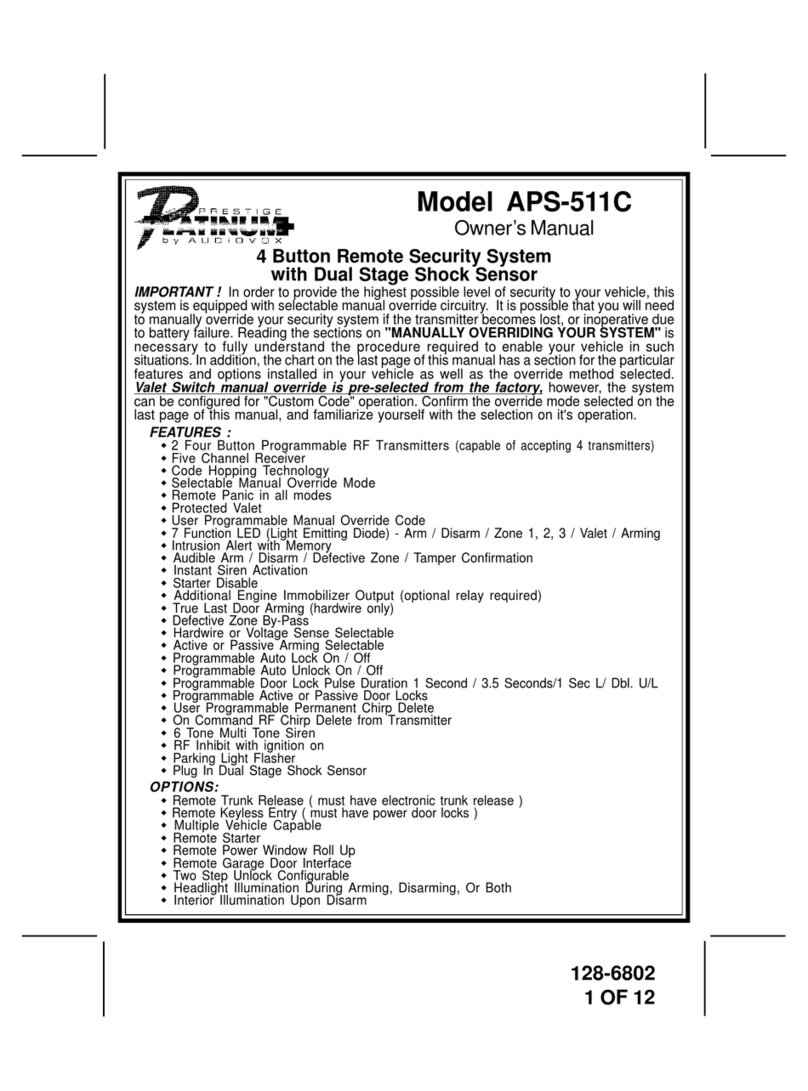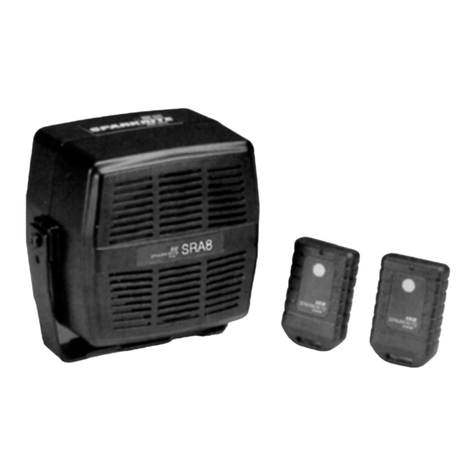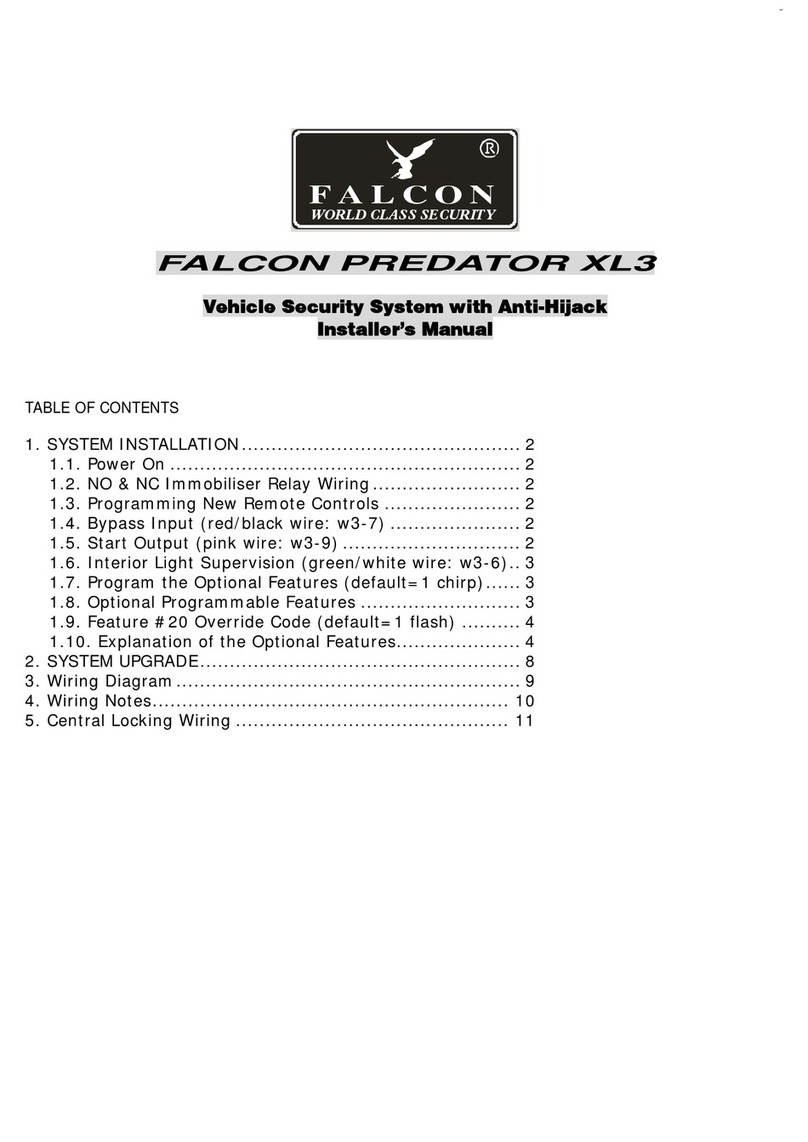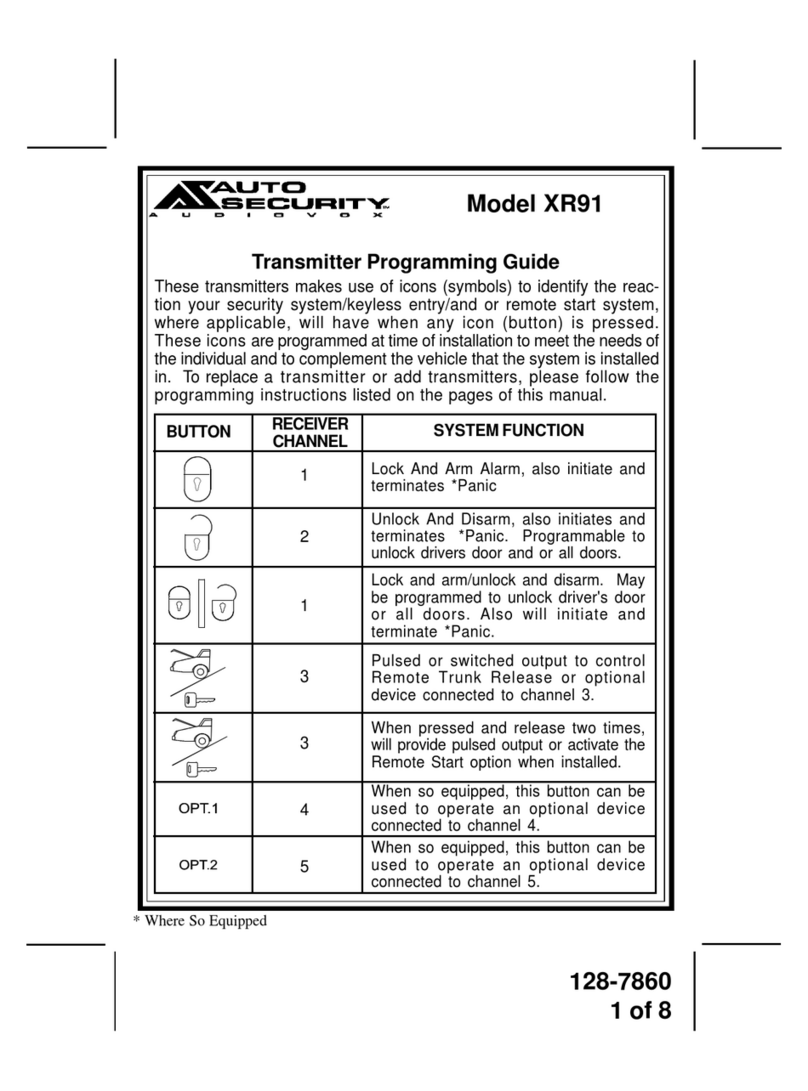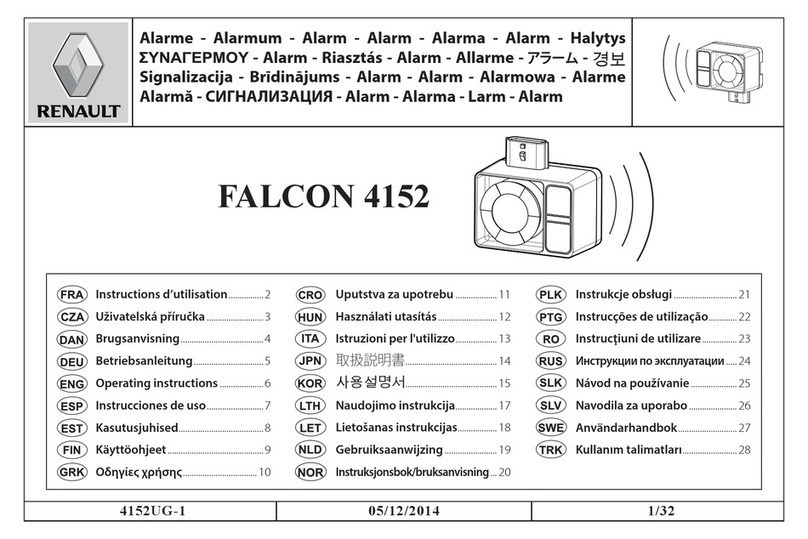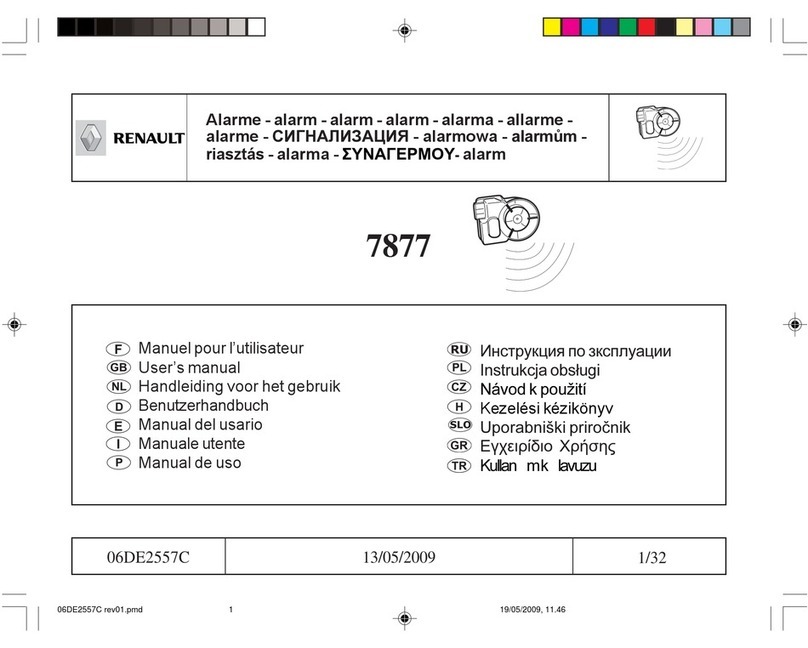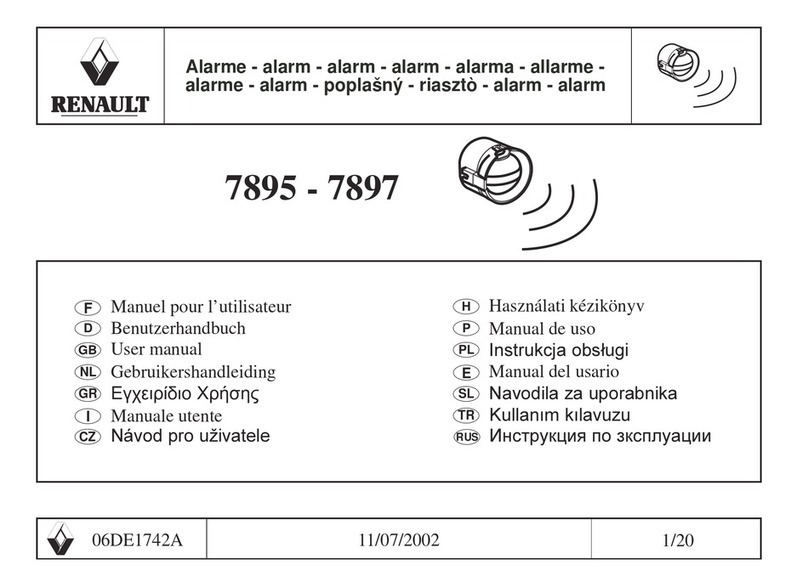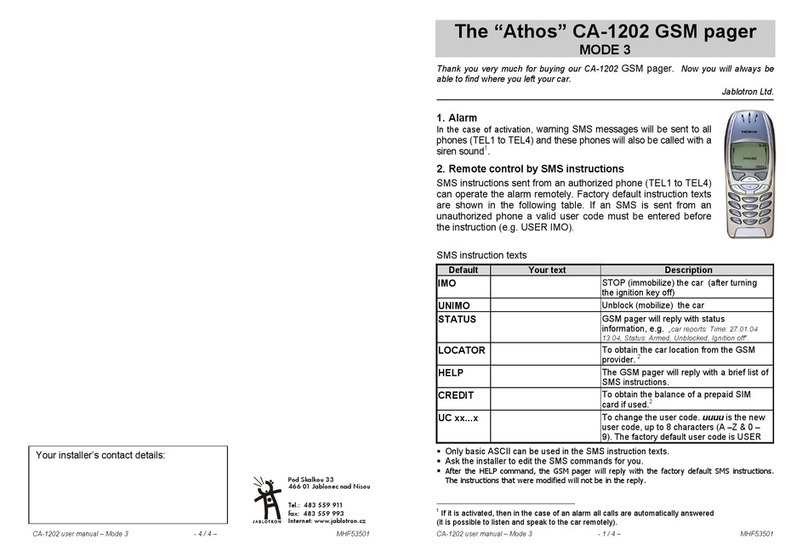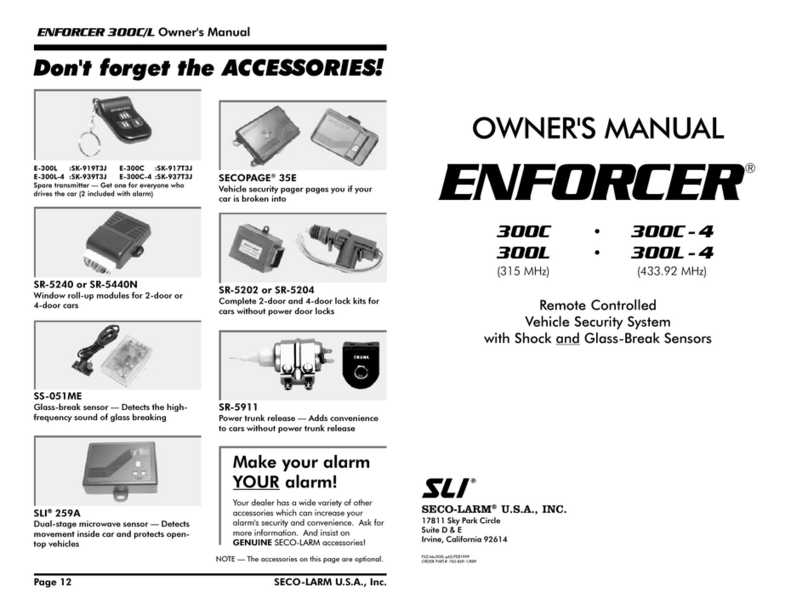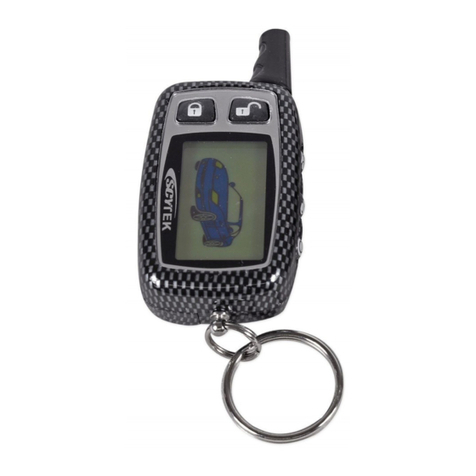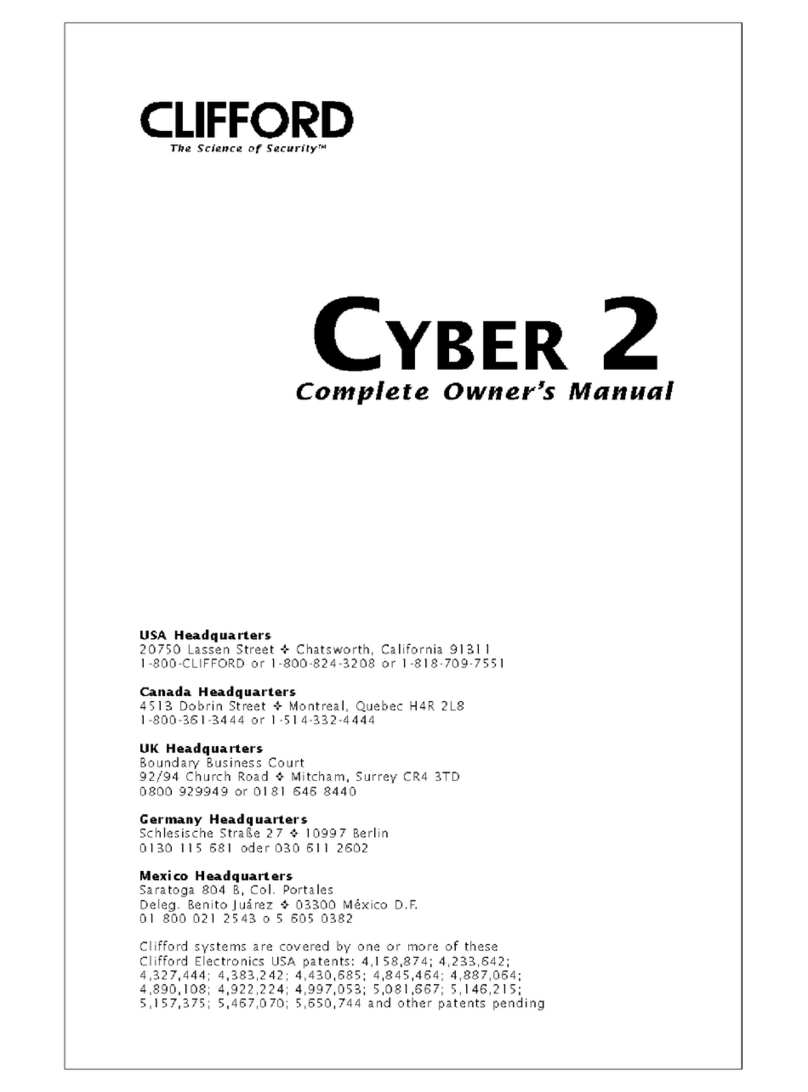rev04
8
During the alarm condition pressing the remote control button n. 1 once will simply silence the siren and stop the indicators, leaving the
system armed and ready to detect further irregularities. In order to disarm the system it is necessary to press the push-button twice.
In order to minimise environmental disturbance, the alarm cycles in an activation period are limited to a maximum of 10/sensor trigger input.
4.1. Check control function
During the arming time the protection functions of the system can be tested without generating an alarm cycle.
Arm the system, wait 20 s to allow for stabilisation, then test the protection functions as appropriate during the remaining 40 s:
a) Test the movement sensor, by e.g. simulating an attempt to force the steering lock, dragging the vehicle or tilting it up from the side-stand
to vertical. ÄIf the simulation is detected correctly, it is signalled by sharp audible signals. If required, adjust sensitivity.
b) Turn ignition on. ÄIf the ignition lock tamper protection circuit works properly, you will hear a sequence of sharp audible signals.
4.2. Alarm memory
If the security system has been triggered during your absence, upon disarming you will be warned by different audible signals, depending
of the nature of the alarm cause:
a) 1 audible signal = tampering with the ignition lock, cut of power supply
b) 2 audible signals = lifting or dragging the vehicle
c) 3 audible signals = a + b
The warning signal remains stored until the end of the inhibition time (60 s) that follows the subsequent arming.
4.3. Reduction of audible alarm power
The sound alarm can be weakened when the vehicle is parked in areas where unnecessary noise has to be avoided. When arming, keep
push-button n. 1 of the transmitter pressed for about 7 s. Upon arming, keep push-button n. 1 pressed for about 7 s. The reduction of the
sound power is confirmed by two deep short audible signals. This setting is valid for one arming period only.
5. MAIN-LIBRE FUNCTION
Besides its operation as a conventional remote control key, the transmitter can be used in Main-libre mode (recognition of the driver). This
function is selectable.
When the Main-libre function is enabled, the transmitter sends a coded signal at regular intervals (1,5 s). The small LED on the transmitter
Operating instructions

